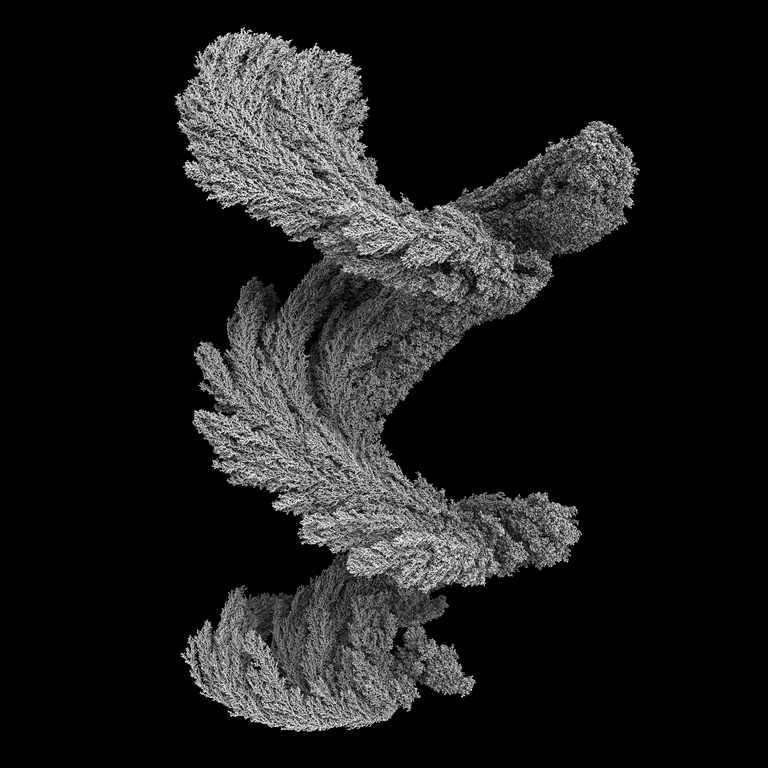Above: Growth by Aggregation, by Andy Lomas
For this blog post, I have chosen to discuss a series of works by Andy Lomas titled “Aggregation.” His website can be found here: www.andylomas.com, and this series in particular can be found here: http://www.andylomas.com/aggregationImages.html. I believe the images were created in 2005.
First and foremost, I admire the complexity of the end result. He provides a pixel image at ½ the full resolution on his website and it is still stunning. I think that the math behind the project actually enhances the appeal of the final image, lending it a sense of calculated spontaneity. The second reason I admire the series is its resemblance to plants and coral. It draws on nature as an inspiration, forcing the viewer to think about the incredibly complex processes behind the creation of living things. Ultimately, it is not only pleasing to look at, but also interesting to think about.

Above: Aggregation 6, by Andy Lomas
The images in “Aggregation” are gradually created by “simulating the paths of millions of particles randomly flowing in a field of forces”. By building on top of a simple foundation, the algorithms involved were able to create incredibly complex structures. My knowledge is rudimentary, but I’d imagine the algorithms involved are fairly complicated. However, there are aspects of repetition that aesthetically improve the final images and presumably simplify the algorithms somewhat.
I also did a little research into Lomas, and I discovered that he has a passion for morphogenesis, which is the biological process that causes an organism to develop its shape. This clearly impacts his work, specifically the aggregation series. The process of accretion in his work is similar to those found in the natural world, and as a result the final images resemble plants and coral. Lomas is very upfront about this influence; he quotes D’arcy Wentworth Thompson, a pioneer of mathematical biology, as an inspiration. As I mentioned before, I admire his passion and I believe it resulted in harmonious and thought-provoking work. I hope that artists and mathematicians will continue looking to the natural world for inspiration.
![[OLD FALL 2017] 15-104 • Introduction to Computing for Creative Practice](https://courses.ideate.cmu.edu/15-104/f2017/wp-content/uploads/2020/08/stop-banner.png)